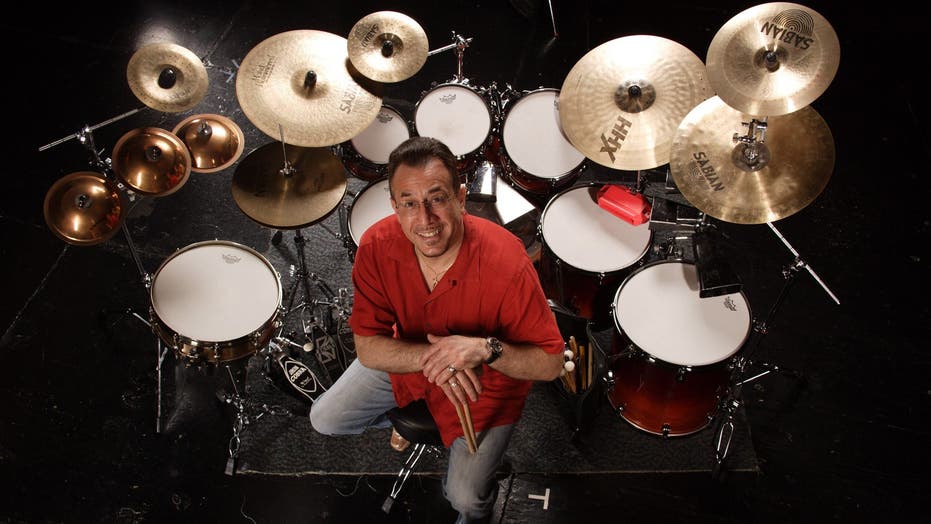Driving across the streets of the Fort Apache section of the South Bronx, Robert Dennis Michael Sanabria, better known as Bobby Sanabria, 55, remembers with nostalgia the sounds and rhythms of his childhood.
He hears the conga drums in the park during the summer time, the gospel choir of an African-American Pentecostal church, the hymns from the Catholic parish where once he was an altar boy, even the ringing bells of the Mister Softee ice cream truck.
The Latin Jazz tradition was not born in Cuba, it was not born in Africa, but right here on 110th Street and Fifth Avenue in 1939.
“When I was growing up, music was all around me,” he said. “My mother will play radio WADO in the morning. That station will play boleros from all different parts of Latin America.”
Walking around the corner of the project where he grew up, Sanabria recalls a more specific memory, one that impacted him for the rest of his life.
“I saw Tito Puente at the age of 12 playing in front of my project with his great orchestra,” he says. “This is what I want to do for the rest of my life.”
And that’s what he did.
Despite the challenges of growing up in one of the toughest neighborhoods of New York City, Sanabria is a five-time Grammy-nominated Latin jazz musician combining his passion for performing with education.
He teaches audiences around the world and students in classrooms in New York City about the history and legacy of Afro-Cuban Jazz Music.
In 2006, Sanabria was inducted into the Bronx Walk of Fame having a permanent street named after him in the Bronx’s Grand Concourse.
A son of Puerto Rican parents, Sanabria is proud of his background and upbringing.
“I’m a Nuyorican,” he says. “A Nuyorican is a person from Puerto Rican descendants whose parents are from Puerto Rico, grows up in South Brooklyn, Spanish Harlem, El Barrio or the South Bronx, and grows up listening to Jazz, Afro-Cuban music, Funk, R&B, Rock, and has a Jewish sense of humor.”
Sanabria attended Boston’s Berklee College of Music at a time when Latin music education was unknown. In college, he became known as the ‘guy with the Latin records’ given his music collection of legendary artist, including Eddie Palmieri, Mario Bauza, and Tito Puente.
After receiving a bachelor’s degree in music, he started a career as a percussionist and drummer sharing the stage with the same legendary figures whose albums he grew up listening to.
During his 30 years as a professional musician, Sanabria has recorded eight albums and has played as a soloist while leading three musical ensembles. He has traveled throughout the U.S. and abroad to countries in Latin America, Europe and Asia spreading the gospel of Latin Jazz music.
The works of Mexican writer and poet Octavio Paz inspires his latest album, called “Multiverse,” which is scheduled to be release in August.
“The Latin Jazz tradition was not born in Cuba, it was not born in Africa, but right here on 110th Street and Fifth Avenue in 1939 with the Machito Afro-Cubans,” is one of Sanabria’s favorite introductory lines when he talks about the history of Latin Jazz music.
There are other Latin Jazz performers and educators in the New York City scene, but there are qualities that make Sanabria unique.
“The biggest difference is that Bobby is a strong advocate for the music and also very knowledgeable about history,” said Chris Washburne, director of the Louis Armstrong Jazz Performance Program at Columbia University. “When you go and see him perform it is not just a Latin jazz performance, it’s a history lesson, and a lesson about the cultural context from which his music emerged.”
Washburne is also a trombone player and plays in one of Sanabria’s bands.
“Bobby Sanabria is the contemporary voice for Afro-Cuban and Latin Music today,” said Justin DiCioccio, chair of the jazz arts program at the Manhattan School of Music. “His knowledge and understanding of the music is second to none.”
In 1999, DiCioccio, invited Sanabria to start the Afro-Cuban Jazz program at the school. In 2009 the Afro-Cuban jazz orchestra of the Manhattan School of Music was nominated for the category of best Latin jazz album at the Latin Grammys, a recognition the school had never received before.
Sanabria led the group of musicians that sued the Grammy Awards in 2011 after the organization cut 31 categories including the best Latin jazz. The category was reinstatement after the lawsuit.
Sanabria also teaches Latin Jazz at New York’s New School.
In both academic institutions, Sanabria tells his mainly non-Latino jazz students to get immersed in the world of Afro-Cuban jazz music. But Sanabria is concerned that Latino kids are growing up without knowing enough about the roots of Latin music.
Today in the streets where he grew up, the sound of reggaeton and electronic music has displaced the beats of the congas and the more traditional Latin American rhythms for which he’s known.
“The average person knows who Lady Gaga is,” he said. “But I want them to know who Duke Ellington is and Tito Puente and Machito and Mario Bauza and, hopefully, Bobby Sanabria.”


